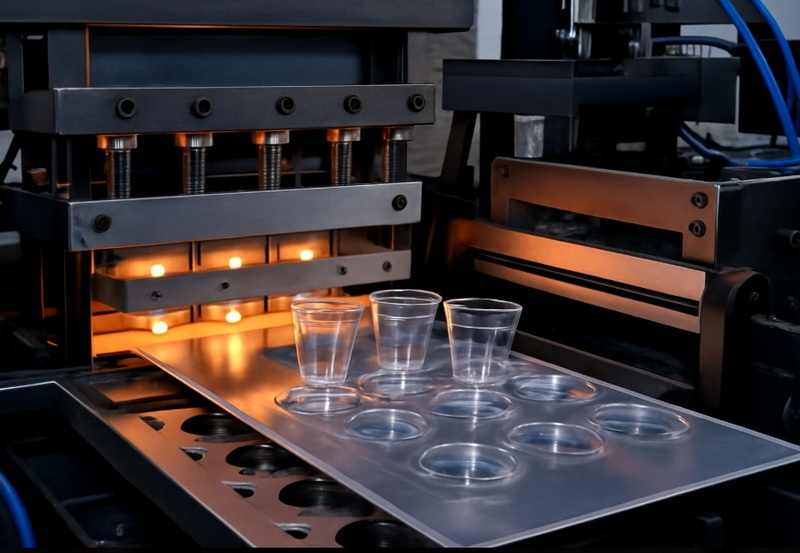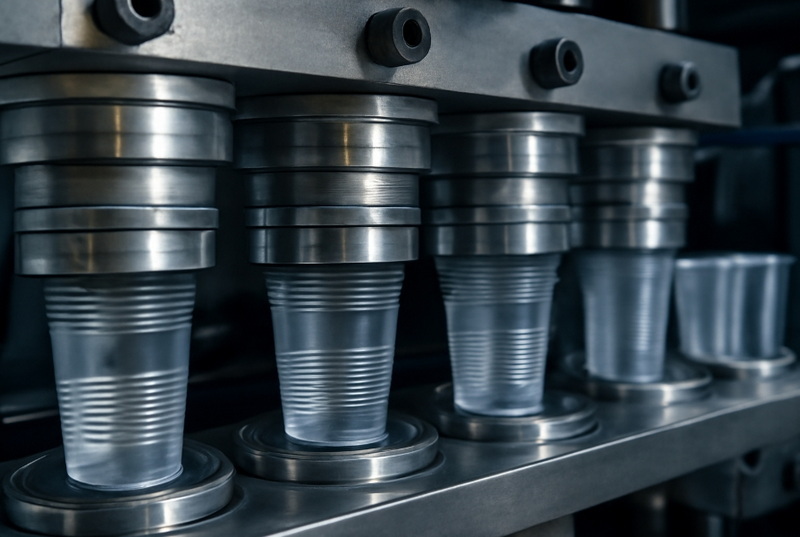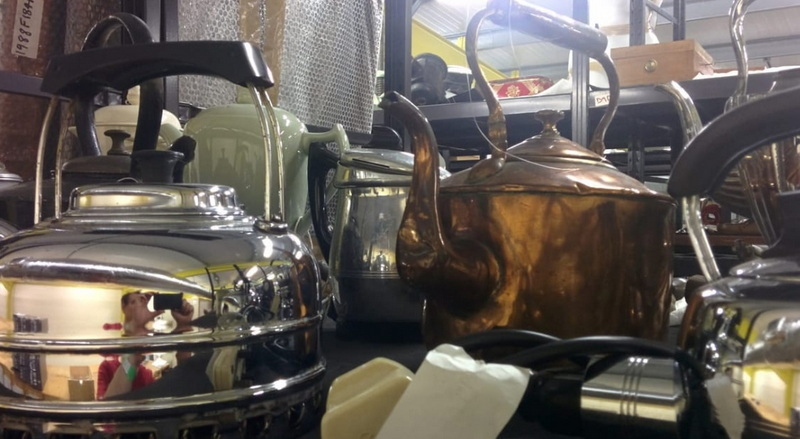
Content Menu
● Understanding Disposable Cup Thermoforming Machines
>> What Is a Disposable Cup Thermoforming Machine?
>> Types of Thermoforming Machines
● How Does a Disposable Cup Thermoforming Machine Work?
>> Step 1: Material Feeding
>> Step 2: Heating
>> Step 3: Forming
>> Step 4: Cooling
>> Step 5: Cutting and Ejection
>> Step 6: Trimming and Quality Control
● Key Components of a Disposable Cup Thermoforming Machine
>> 1. Material Feeding System
>> 2. Heating System
>> 3. Forming Station
>> 4. Cooling System
>> 5. Cutting and Ejection Mechanism
>> 6. Control System
● Advantages of Disposable Cup Thermoforming Machines
>> High Efficiency and Productivity
>> Versatility
>> Cost-Effectiveness
>> Quality and Consistency
>> Scalability
● Applications of Disposable Cup Thermoforming Machines
● Innovations and Trends in Thermoforming Technology
>> Automation and Smart Control
>> Energy Efficiency
>> Sustainability
>> Customization
● Challenges in Disposable Cup Thermoforming
● The Future of Disposable Cup Thermoforming Machines
● Conclusion
● Frequently Asked Questions (FAQ)
>> 1. What materials can be used in a disposable cup thermoforming machine?
>> 2. How does a disposable cup thermoforming machine ensure product quality?
>> 3. What is the difference between vacuum forming and pressure forming in cup production?
>> 4. Can a disposable cup thermoforming machine produce cups of different sizes and shapes?
>> 5. What maintenance is required for a disposable cup thermoforming machine?
Disposable cups are everywhere in modern life, from coffee shops and restaurants to offices and public events. The convenience and hygiene offered by disposable cups have made them a staple of the food and beverage industry. But have you ever wondered how these cups are produced in such vast quantities with consistent quality? The answer lies in the sophisticated technology of the disposable cup thermoforming machine. This article explores what a disposable cup thermoforming machine is, the detailed mechanics behind its operation, its essential components, advantages, applications, and the latest trends shaping its future. Whether you are an industry professional, a business owner, or simply curious about manufacturing technology, this comprehensive guide will provide valuable insights into the world of disposable cup thermoforming.

Understanding Disposable Cup Thermoforming Machines
What Is a Disposable Cup Thermoforming Machine?
A disposable cup thermoforming machine is an industrial device designed to mass-produce plastic cups and similar containers. The process involves heating a thermoplastic sheet until it becomes flexible, then shaping it into a cup using a mold, followed by cooling and trimming to produce the finished product. These machines are essential for high-volume cup production, ensuring speed, efficiency, and uniformity.
Types of Thermoforming Machines
Disposable cup thermoforming machines generally fall into two main categories:
- Vacuum Forming Machines: These machines use negative air pressure to pull a heated plastic sheet over a mold, forming the desired shape.
- Pressure Forming Machines: These use positive air pressure to press the plastic sheet onto the mold, allowing for more intricate details and sharper features.
Both types are widely used, and the choice depends on the complexity of the cup design and the desired production speed.
How Does a Disposable Cup Thermoforming Machine Work?
The operation of a disposable cup thermoforming machine is a multi-stage process that transforms a flat plastic sheet into a finished cup. Here's a detailed look at each stage:
Step 1: Material Feeding
The process begins with the feeding of thermoplastic sheets, such as polypropylene, polystyrene, or polyethylene terephthalate, into the machine. The feeding mechanism is typically automated, using rollers or pin chains to ensure smooth and precise movement of the material.
Step 2: Heating
Once inside the machine, the plastic sheet passes through a series of heating elements. These elements, often electric or infrared, heat the sheet to a specific temperature, making it soft and pliable but not molten. The heating system is divided into zones to allow for precise temperature control, ensuring the material is evenly heated for optimal forming.
Step 3: Forming
After reaching the desired temperature, the softened sheet is transferred to the forming station. Here, the sheet is shaped into cups using either vacuum or pressure forming techniques:
- Vacuum Forming: The mold is placed beneath the heated sheet, and a vacuum removes the air between the sheet and the mold, pulling the plastic tightly over the mold's surface.
- Pressure Forming: Compressed air pushes the heated sheet onto the mold, creating sharper details and allowing for more complex cup designs.
The mold's design is critical, as it determines the cup's shape, size, and thickness.
Step 4: Cooling
Once the plastic has been formed into the shape of a cup, it must be cooled to set its structure. Cooling is typically achieved using water or air channels integrated into the mold. Proper cooling ensures that the cup retains its shape and meets quality standards.
Step 5: Cutting and Ejection
After cooling, the formed cups are separated from the excess plastic sheet using cutting tools. This cutting can be performed within the forming station or as a separate step. The finished cups are then ejected from the mold, ready for further processing or packaging.
Step 6: Trimming and Quality Control
Any excess material or rough edges are trimmed to ensure a smooth, finished product. The cups are then inspected for defects, such as uneven edges or inconsistencies in thickness, ensuring that only high-quality products reach the market.
Key Components of a Disposable Cup Thermoforming Machine
1. Material Feeding System
This system automates the movement of plastic sheets into the machine, ensuring a consistent supply of material for continuous production. It can be adjusted to accommodate different sheet widths and thicknesses, providing flexibility for various cup sizes.
2. Heating System
The heating system uses electric or infrared elements to raise the temperature of the plastic sheet. Divided into multiple zones, it allows for precise control over the heating process, ensuring that the material is evenly softened for forming.
3. Forming Station
The forming station contains the molds that shape the cups. It supports both vacuum and pressure forming methods, allowing manufacturers to produce a wide range of cup designs. The quality of the molds directly affects the final product's appearance and strength.
4. Cooling System
Integrated with the molds, the cooling system uses water or air to quickly cool the formed cups, solidifying their shape. Efficient cooling is essential for maintaining production speed and product quality.
5. Cutting and Ejection Mechanism
This mechanism separates the finished cups from the excess material and ejects them from the mold. It is designed for speed and precision, minimizing waste and ensuring a clean cut.
6. Control System
Modern machines are equipped with programmable logic controllers (PLCs) and touch-screen interfaces. These systems allow operators to monitor and control every aspect of the production process, from temperature and pressure settings to cycle times and quality checks.
Advantages of Disposable Cup Thermoforming Machines
High Efficiency and Productivity
Disposable cup thermoforming machines are capable of producing large quantities of cups in a short period. Automation reduces the need for manual labor, increases consistency, and enables round-the-clock production.
Versatility
By simply changing the molds, manufacturers can produce a wide variety of cup sizes and shapes. This flexibility is ideal for businesses that need to cater to different customer requirements or seasonal trends.
Cost-Effectiveness
Efficient use of materials and energy-saving features help lower production costs. The automation of feeding, forming, and cutting processes minimizes waste and reduces labor expenses.
Quality and Consistency
Advanced control systems and precise molds ensure that each cup meets strict quality standards. Uniform wall thickness, smooth edges, and consistent shapes are hallmarks of thermoformed cups.
Scalability
Disposable cup thermoforming machines can be configured for small-scale or large-scale production. Whether you are a startup or a large manufacturer, these machines can be tailored to meet your specific needs.

Applications of Disposable Cup Thermoforming Machines
- Food and Beverage Industry: The primary application is the production of cups for hot and cold drinks, yogurt, ice cream, and other food containers.
- Healthcare: Used to manufacture sterile disposable cups for hospitals and clinics.
- Retail and Hospitality: Custom-branded cups for cafes, restaurants, hotels, and events.
- Industrial Packaging: Production of specialized containers for packaging and transporting goods.
Innovations and Trends in Thermoforming Technology
Automation and Smart Control
Modern disposable cup thermoforming machines are increasingly equipped with advanced sensors, PLCs, and user-friendly touch-screen interfaces. These features enable real-time monitoring, diagnostics, and remote operation, which enhance efficiency and reduce downtime.
Energy Efficiency
Manufacturers are focusing on reducing energy consumption by optimizing heating systems and integrating energy recovery technologies. Efficient heating and cooling systems not only lower operational costs but also contribute to environmental sustainability.
Sustainability
There is a growing emphasis on using biodegradable or recyclable materials in disposable cup production. Machines are being adapted to process new eco-friendly plastics, supporting the shift toward more sustainable packaging solutions.
Customization
Quick-change mold systems allow manufacturers to switch between different cup designs rapidly. This capability is essential for meeting the increasing demand for customized products and small-batch production.
Challenges in Disposable Cup Thermoforming
Despite their many advantages, disposable cup thermoforming machines face several challenges:
- Material Waste: Inefficient forming or cutting can result in excess scrap, increasing production costs and environmental impact.
- Maintenance: Regular maintenance is required to keep the machines running smoothly and to prevent breakdowns.
- Environmental Concerns: The use of traditional plastics is an ongoing concern, prompting the industry to seek greener alternatives and improve recycling processes.
- Initial Investment: High-quality machines require significant upfront investment, though this is often offset by long-term savings and increased productivity.
The Future of Disposable Cup Thermoforming Machines
The future of disposable cup thermoforming machines is bright, with ongoing advancements in automation, sustainability, and customization. The integration of artificial intelligence, Internet of Things (IoT) connectivity, and advanced automation will further streamline production, reduce costs, and minimize environmental impact. As the demand for sustainable packaging grows, machines capable of processing biodegradable and recyclable materials will become increasingly important. These innovations will ensure that disposable cup production remains efficient, cost-effective, and environmentally responsible.
Conclusion
The disposable cup thermoforming machine is a cornerstone of modern manufacturing, enabling the mass production of high-quality disposable cups with efficiency, precision, and versatility. From the initial feeding of plastic sheets to the final trimming and inspection, every stage of the process is carefully controlled to ensure consistent results. As technology evolves, these machines are becoming smarter, more energy-efficient, and better equipped to handle sustainable materials. For businesses in the food and beverage industry and beyond, investing in a disposable cup thermoforming machine is a strategic move that promises long-term benefits in productivity, cost savings, and product quality.

Frequently Asked Questions (FAQ)
1. What materials can be used in a disposable cup thermoforming machine?
Disposable cup thermoforming machines are compatible with a range of thermoplastic materials, including polypropylene, polystyrene, polyethylene terephthalate, and polyvinyl chloride. The choice of material depends on the desired properties of the final cup, such as clarity, strength, and heat resistance.
2. How does a disposable cup thermoforming machine ensure product quality?
Product quality is maintained through precise temperature control, advanced mold design, and automated inspection systems. The machine's control system monitors each stage of the process, ensuring uniform heating, forming, cooling, and cutting for consistent results.
3. What is the difference between vacuum forming and pressure forming in cup production?
Vacuum forming uses negative pressure to draw the heated plastic sheet over the mold, which is suitable for simpler shapes and faster production. Pressure forming uses positive air pressure to press the sheet onto the mold, achieving finer details and more complex designs.
4. Can a disposable cup thermoforming machine produce cups of different sizes and shapes?
Yes, by changing the molds, the machine can produce a wide range of cup sizes and shapes. This flexibility makes it ideal for manufacturers who need to cater to diverse product requirements or custom orders.
5. What maintenance is required for a disposable cup thermoforming machine?
Regular maintenance includes cleaning the heating elements, lubricating moving parts, inspecting molds for wear, and checking the control system for errors. Preventive maintenance helps ensure consistent performance and extends the machine's lifespan.

















